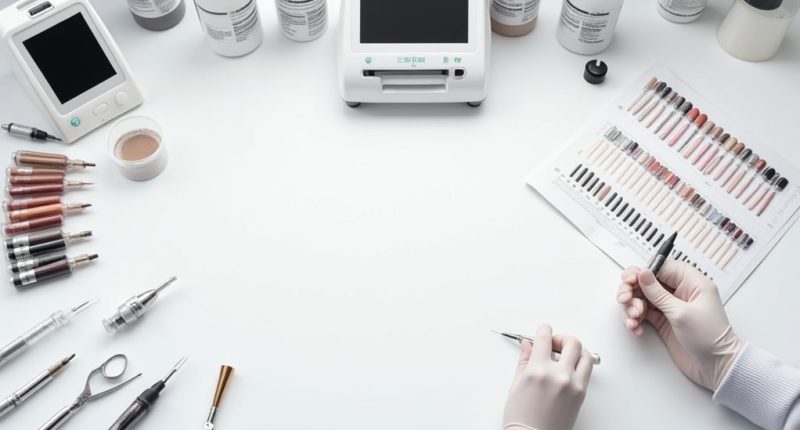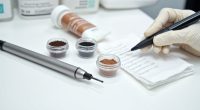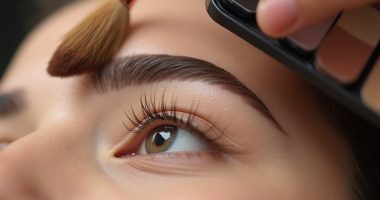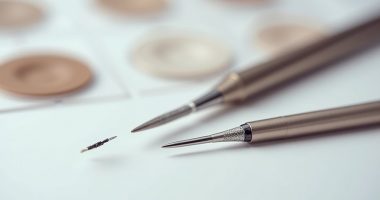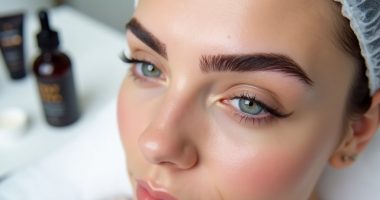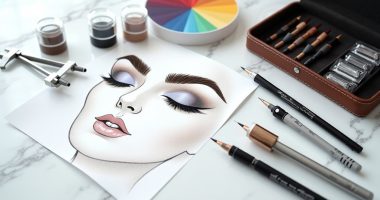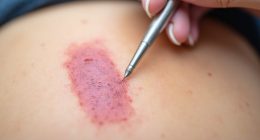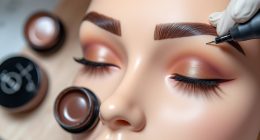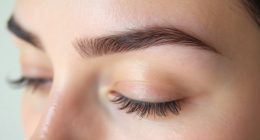Mastering permanent makeup requires meticulous preparation, color theory expertise, and unwavering safety protocols. Artists must analyze skin undertones before selecting pigments, perform test patches, and maintain surgical-level sterilization standards. Techniques vary—microblading for natural eyebrows, steady hands for precise eyeliner, and gradient effects for lips. Aftercare education is non-negotiable. Some clients will ignore instructions then blame the artist anyway. The difference between amateur and professional results? Those seemingly small technical details that aren't actually small at all.
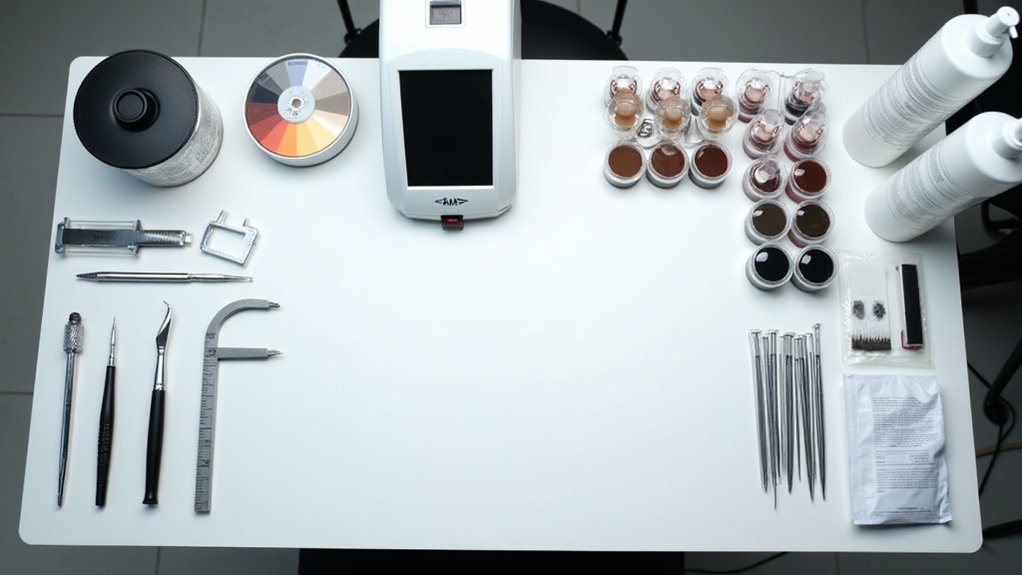
Transforming ordinary faces into works of art isn't for the faint of heart. It requires meticulous preparation, technical precision, and an artist's eye. Before the needle ever touches skin, professionals must conduct thorough client consultations, examining skin types and medical histories with forensic detail. Allergies matter. Previous cosmetic procedures matter. Even medication history matters. And let's be honest—some clients have wildly unrealistic expectations. A good artist manages these expectations while developing customized treatment plans based on facial features.
Color theory isn't just for painters; it's essential for permanent makeup artists who need to analyze skin undertones and select complementary pigments that won't turn bizarre shades over time. Test patches aren't optional. They're mandatory.
Color mastery is non-negotiable. Choose the wrong pigment, and your client's dream brows could morph into a technicolor nightmare.
Sterilization isn't glamorous, but it's non-negotiable. Disposable tools. Fresh needles. Gloves. Masks. Clean clothes. Hospital-grade disinfectants. The workspace should be cleaner than some operating rooms. Local health regulations exist for a reason. Follow them. Artists must complete bloodborne pathogens training annually to ensure they understand how to prevent cross-contamination during procedures.
Creating precise, symmetrical eyebrows requires mathematical precision and artistic flair. Technicians map facial features, ensuring brows complement other features rather than fighting against them. Microblading strokes mimic natural hair. Powder fill techniques create softness. Combination approaches offer dimension. Balance is everything. Lopsided brows aren't a good look on anyone. Unlike traditional tattoos, microblading uses fine needles to create hair-like strokes that blend with natural brows for a more realistic appearance.
Eyeliner application demands steady hands and nerves of steel. One wrong move and the client looks perpetually surprised—or worse. Pressure control creates thin, natural lines or bold, dramatic styles. Lash enhancement techniques add depth without obvious artifice. Both eyes must match. Period.
Lip work transforms thin, pale lips into full, colored masterpieces through gradient effects and careful contouring. Shape enhancement happens through meticulous outlining. Ombre effects add dimension. Different lips need different approaches—one size doesn't fit all in this game. A high-quality permanent makeup machine with appropriate needle cartridges is essential for achieving precise lip blushing results that last for 2-3 years.
After the artistry comes the education. Clients need detailed aftercare instructions, not vague suggestions. Healing isn't always pretty. Touch-ups are inevitable. Factors affecting longevity—sun exposure, skincare routines, smoking—need explanation. Some clients will ignore all advice anyway and blame the artist when things go wrong. It happens.
The permanent makeup industry isn't just about making people pretty. It's science, art, psychology, and patience rolled into one challenging profession. Not everyone has what it takes. Those who do transform faces—and often lives—one precise stroke at a time.
Frequently Asked Questions
How Painful Is the Permanent Makeup Application Process?
Permanent makeup pain? It varies.
Truth is, it depends entirely on individual pain tolerance. Most clients experience mild discomfort—think scratching or plucking sensation. Nothing unbearable.
Modern numbing techniques make a huge difference. Two-step numbing process with lidocaine? Game changer.
Some clients literally fall asleep during the procedure. Others might wince a bit. Lips are definitely more sensitive than eyebrows.
After? Some swelling and redness. Normal. Goes away within days.
How Long Does Permanent Makeup Typically Last Before Fading?
Permanent makeup doesn't stick around forever. Period.
Color retention varies widely based on treatment type and personal factors. Most applications last 1-3 years before significant fading duration becomes noticeable.
Eyebrows? 1-2 years. Eyeliner hangs on for 1-3 years. Lips actually maintain pigment longest, sometimes 2-5 years.
Oily skin? Faster fading. Sun worshipper? Kiss that pigment goodbye sooner.
And those fancy techniques matter too – microblading fades faster than powder brows. Touch-ups are inevitable.
Can Permanent Makeup Be Removed if I Don't Like It?
Yes, permanent makeup can be removed. Not perfect, but options exist.
Removal options include laser treatments, saline solutions, glycolic acid, and specialized techniques like LiFT® and PhiRemoval. Most require multiple sessions spaced 8-12 weeks apart.
Results vary wildly. Some pigments are stubborn. Fading techniques work through different mechanisms—lasers shatter pigments, while saline draws them out through osmosis.
Complete removal? Sometimes. Partial fading? Usually. Professional consultation is a must. No DIY experiments here, folks.
Is Permanent Makeup Safe for People With Skin Conditions?
Permanent makeup isn't one-size-fits-all for people with skin conditions.
Safety considerations are essential. Active eczema, psoriasis, or acne? Bad idea. Could trigger flare-ups or worse complications. Seriously, don't wing it.
Professional assessment is non-negotiable before any procedure.
Some conditions might actually benefit from cosmetic tattooing—but only after proper evaluation.
The pigments themselves? Potential allergic reactions.
The procedure? Infection risks if equipment isn't properly sterilized.
Bottom line: consult a dermatologist first. Your face will thank you.
What Qualifications Should I Look for in a Permanent Makeup Artist?
Look for legit artist certification first. No shortcuts here. They should have completed a state-approved training program (minimum 100 hours) and hold proper licensing from organizations like AAM or SPCP.
Experience level matters. A lot. Your face isn't the place for someone's practice run. Check their portfolio for healed work—not just fresh applications.
Two years minimum experience, please. Clean workspace, single-use needles, thorough consultations. Basic stuff, really. Yet so many skip these checks.
